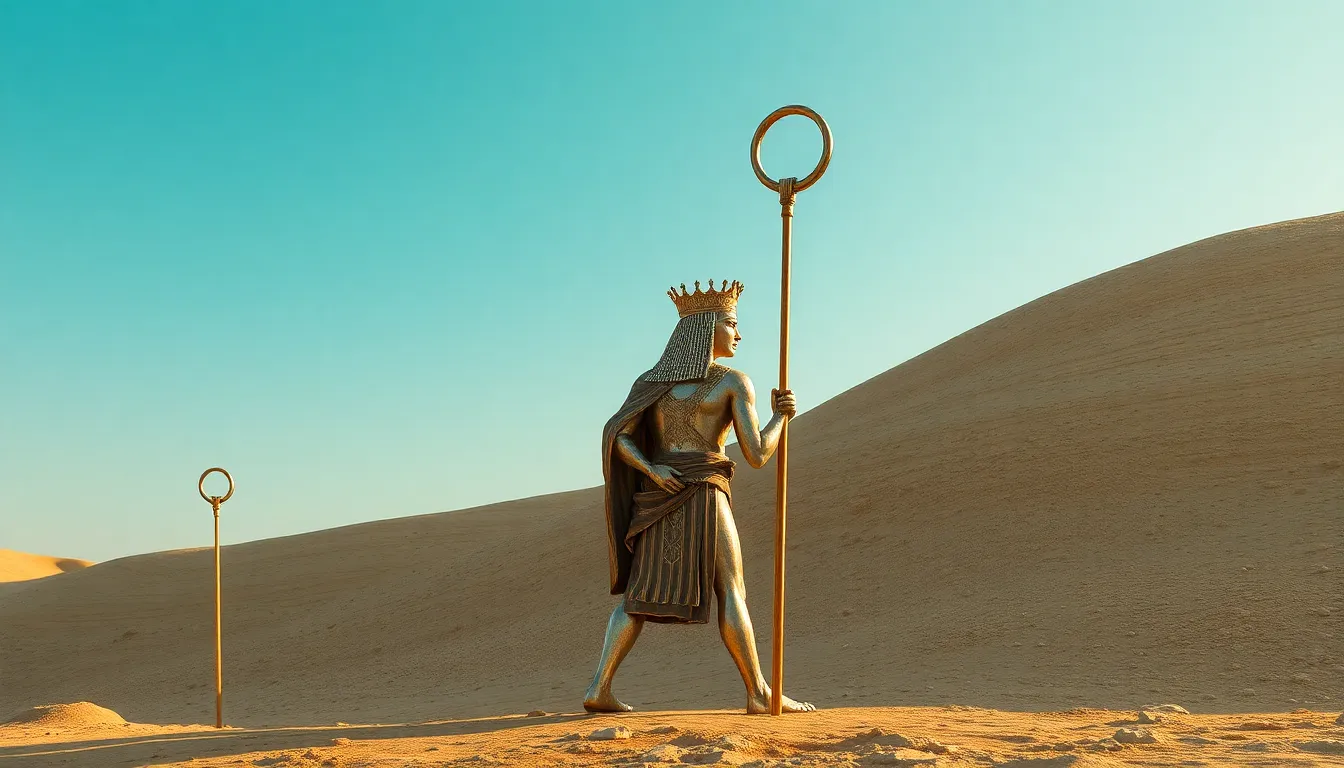The Symbolism of the Crook and Flail in Kingship
I. Introduction
The crook and flail are two of the most significant symbols associated with ancient Egyptian kingship. These emblems, often depicted in the hands of pharaohs, represent the dual aspects of leadership: nurturing and authority. Symbols played a crucial role in ancient Egyptian society, serving not only as identifiers of power but also as embodiments of the qualities expected of a ruler.
This article explores the significance of the crook and flail in royal authority, examining their historical context, symbolism, and lasting legacy.
II. Historical Context of the Crook and Flail
The origins of the crook and flail can be traced back to the early periods of ancient Egypt, where they were integral to the representation of kingship. Initially associated with the roles of shepherding and agriculture, these symbols evolved over time to encapsulate the broader responsibilities of a ruler.
- Origins in ancient Egypt: The crook (heqa) symbolizes the shepherd’s staff, while the flail (nekhakha) represents a tool used for winnowing grain.
- Evolution of their use in royal iconography: As the concept of kingship developed, these tools came to symbolize the king’s duty to protect and guide his people.
- Cultural significance in relation to agriculture and shepherding: Both symbols highlight the importance of agriculture, which was central to Egypt’s economy and sustenance.
III. The Crook: Symbol of Leadership and Guidance
The crook is a powerful representation of the shepherd’s role, embodying the qualities of leadership and guidance essential for a successful ruler.
- Representation of the shepherd’s role: Just as a shepherd guides and protects his flock, a king is expected to lead and care for his subjects.
- The crook as a tool for protection and guidance: It signifies the pharaoh’s duty to ensure the welfare and safety of the people.
- Its association with benevolent kingship and care for the people: A ruler wielding the crook is seen as compassionate and nurturing, emphasizing the importance of good governance.
IV. The Flail: Symbol of Power and Authority
In contrast to the crook, the flail symbolizes power, authority, and the enforcement of law and order in the kingdom.
- The flail as a tool of punishment and justice: It represents the king’s ability to administer justice and maintain societal order.
- Its connection to military strength and protection of the realm: The flail is often associated with the military prowess of the pharaoh, emphasizing the ruler’s role as protector of the nation.
- The balance between power and responsibility in kingship: While the flail represents authority, it also underscores the need for responsible leadership.
V. The Duality of the Crook and Flail
Together, the crook and flail represent the ideal qualities of kingship, embodying the duality of a ruler as both nurturer and protector.
- Representation of the ideal king: nurturer and protector: A successful king must balance compassion with strength.
- The interplay between mercy and authority: The dual symbols reflect the need for a ruler to exercise both justice and benevolence.
- Symbolism in the context of maintaining order and harmony: The crook and flail collectively symbolize the harmony that a wise ruler must maintain within the kingdom.
VI. The Crook and Flail in Art and Iconography
The crook and flail are frequently depicted in ancient Egyptian art and sculpture, showcasing their significance in royal iconography.
- Depictions in ancient Egyptian art and sculpture: Numerous reliefs and statues display pharaohs holding the crook and flail, reinforcing their association with divine rulership.
- Use in royal regalia and ceremonial practices: These symbols were integral to the king’s regalia, used in ceremonies to signify the pharaoh’s authority.
- Influence on later cultures and symbols of power: The legacy of the crook and flail has influenced various cultures, appearing in later representations of authority and governance.
VII. The Legacy of the Crook and Flail in Modern Context
Even today, the symbolism of the crook and flail endures, offering valuable insights into contemporary leadership.
- Continuation of their symbolism in contemporary leadership: Modern leaders can learn from the balance of nurturing and authority represented by these symbols.
- Representation in modern media and culture: The crook and flail have appeared in various forms in literature, art, and popular culture, emphasizing their lasting impact.
- The enduring message of balance in leadership: The duality of the crook and flail serves as a reminder of the importance of balancing compassion with strength in leadership roles.
VIII. Conclusion
In summary, the crook and flail are profound symbols of kingship in ancient Egypt, encapsulating the essential qualities of effective leadership. These symbols convey the importance of nurturing and authority, reminding us that true leadership requires a balance between compassion and strength.
As we reflect on the significance of the crook and flail, it is clear that the lessons of ancient symbols continue to resonate with modern leaders, offering timeless guidance on the qualities that define a successful ruler.




